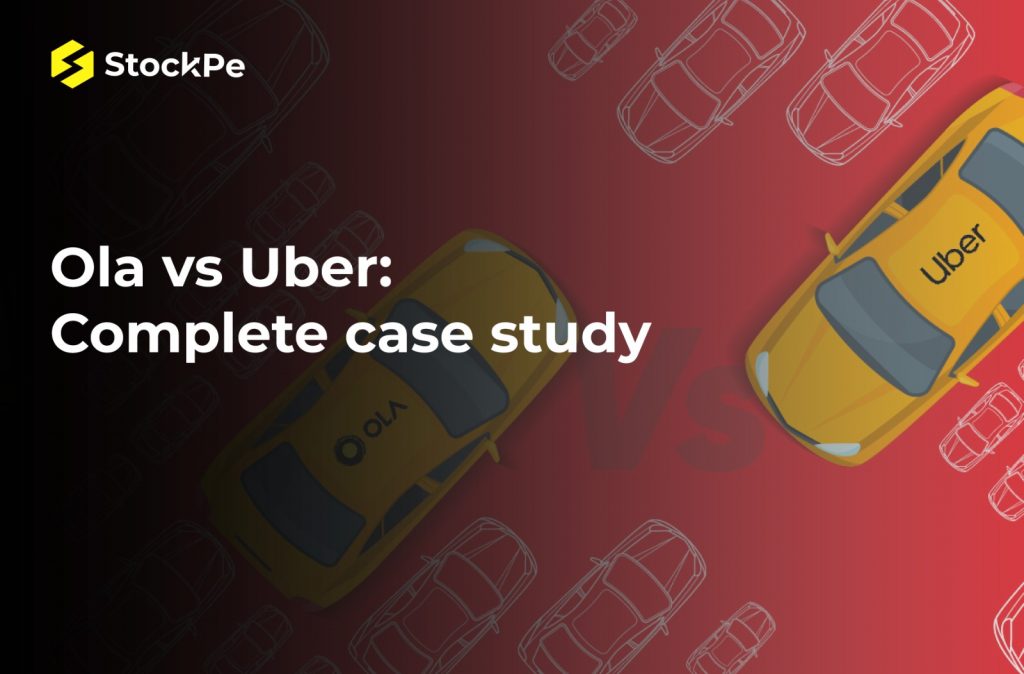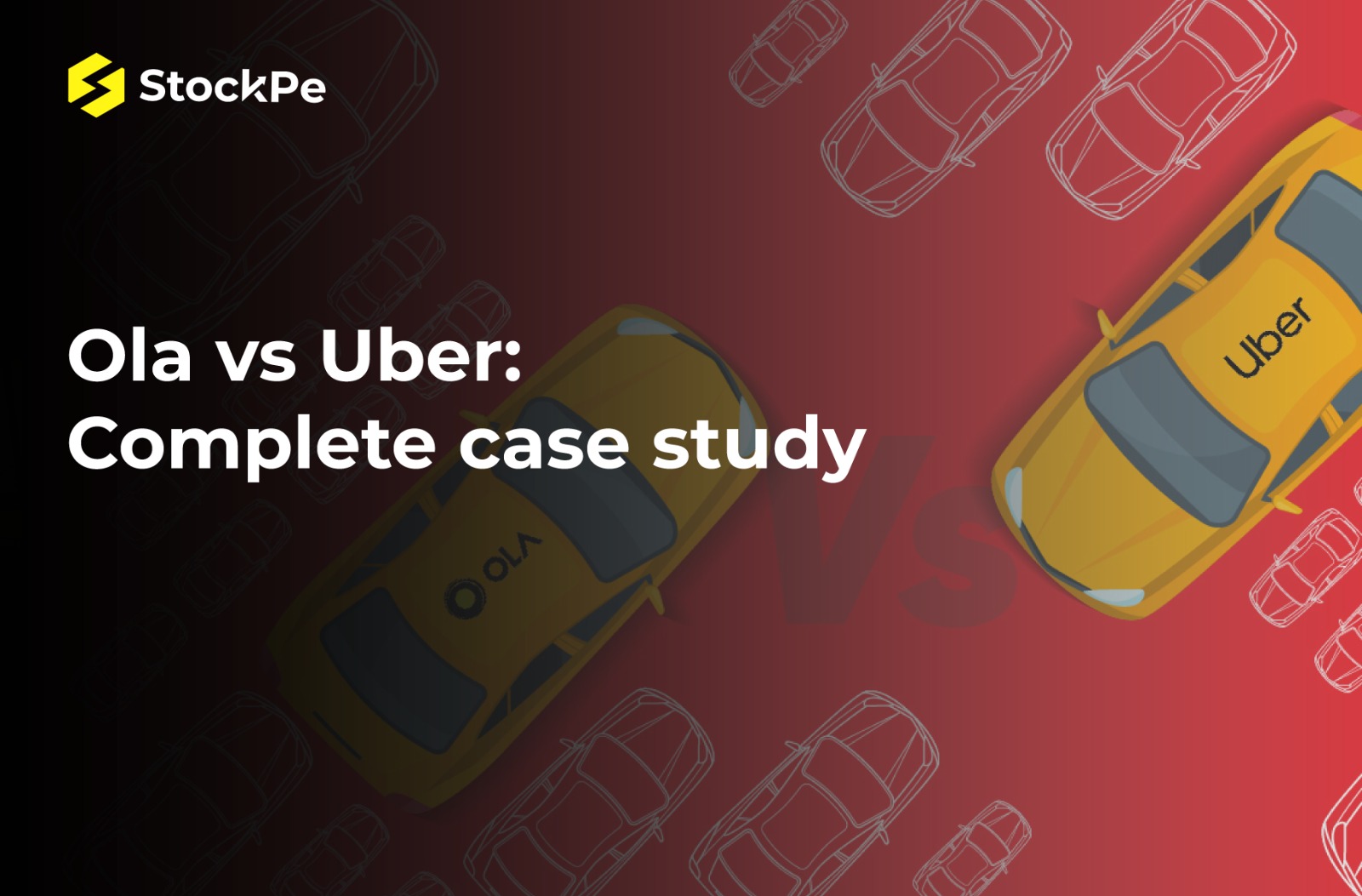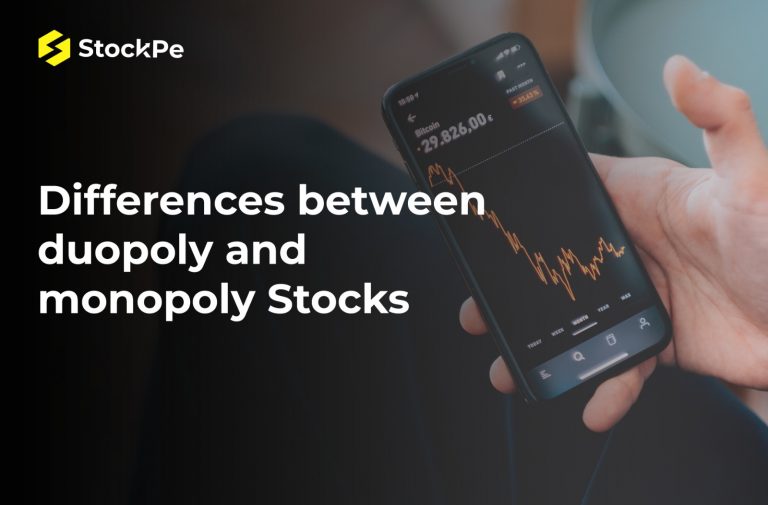The rise of ride-hailing/ taxi services has entirely transformed the transportation industry. Booking a ride on your smartphone and having it come pick you up from your doorstep is a common occurrence these days. The convenience of ride-hailing services has led to a meteoric rise in their usage, especially in crowded urban regions. Statista projects that the worldwide ride-hailing market is likely to expand by US$ 126.5 billion by 2025.
While their services are comparable, there are significant distinctions between the two firms that set them apart. This blog will compare and contrast Ola and Uber, looking at their respective business plans, marketing approaches, and brand identities in great detail. We’ll also look at other essential criterias, such as market share, revenue, and growth rate, to determine which firm is more successful in India.

Ola vs Uber Comparision
| Parameters | Ola | Uber |
| Market Share (2022) | 59% | 41% |
| Total downloads (as of 2022) | 550 million+ | 1 billion+ |
| Monthly active users (as of 2022) | 100 million+ | 93 million+ |
| Total Revenue (2022) | $8.5 billion | $31.8 billion |
| Profit/Loss (2022) | Profit: $3.7 billion | Profit: $1.7 billion |
| YoY Growth (2022) | 42% | 21% |
| Funding Rounds | 8 | 23 |
| Primary Revenue Source | Ride-Hailing | Ride-Hailing |
| Secondary Revenue Source | Food Delivery | Mobility |
| Primary Market | India | Global |
When it comes to comparing Ola vs Uber, there are numerous aspects to contemplate, including service excellence, pricing, security, and accessibility. Let’s take a meticulous glance at the Uber and Ola case study with these distinctive factors.
Market Share and User Base:
In terms of market share, Ola has a significant lead over Uber in India. According to a report, Ola had a 59% market share in India’s ride-hailing market in 2022, while Uber had a 41% market share. However, both companies have faced stiff competition from other ride-hailing services such as Rapido and Meru Cabs.
As of the current year 2022, Ola has amassed a whopping 100+ million registered users in India, whereas Uber boasts approximately 93+ million users. Nevertheless, it’s noteworthy to mention that the count of monthly active users for both corporations is considerably lesser.
Ola and Uber Marketing Strategy Case Study:
Both Uber and Ola in India have extensively invested in advertising and branding to establish themselves as the preeminent ride-hailing service. Ola has been widely recognized for its assertive marketing initiatives, encompassing TV commercials, billboards, and social media promotions. On the flip side, Uber has concentrated further on crafting a polished and refined brand persona. Uber has recently launched a plethora of innovative brand campaigns in India, such as “Uber Zindagi” and “Khudki Gaadi”, to entice a larger customer base.
Business Model:
Both Ola Auto vs Uber Auto have analogous business models, which entail linking commuters with chauffeurs through a mobile application. Nevertheless, there are certain disparities in their methodology. Ola boasts of a multifaceted business model, encompassing many services such as Ola Auto and Ola Bike. Ola additionally provides a plethora of payment alternatives, encompassing cash, debit cards, credit cards, and mobile wallets. Conversely, Uber concentrates on automobile journeys and has freshly introduced amenities like Uber Auto and Uber Moto in certain urban areas.
Fares:
One of the paramount aspects that patrons contemplate when selecting a transportation service is the cost. Uber and Ola in India provide competitive rates and have introduced numerous exclusive promotions to entice additional patrons. Nevertheless, when it comes to overall cost-effectiveness, Ola is reputed to be marginally more economical than Uber. Additionally, Ola presents a plethora of alternatives for ride-sharing, which can substantially diminish the expenses of commuting.
Safety:
Security is a significant apprehension for both Ola and Uber patrons. Both corporations have implemented a plethora of safety measures, including cutting-edge GPS tracking, in-app emergency buttons, and rigorous driver verification protocols. Ola has recently introduced a novel feature named “Guardian” that enables patrons to share their ride particulars with their emergency associates. Similarly, Uber has recently launched a novel feature dubbed “Ride Pass” that enables patrons to share their ride details with reliable acquaintances instantaneously.
Customer Support:
Regarding customer assistance, both Ola Cab vs Uber India possesses specialized customer support squads that are accessible round the clock to handle customer inquiries and grievances. Nevertheless, Ola is reputed to provide exceptional customer assistance compared to Uber. Ola business boasts a committed customer assistance squad that can be contacted through various channels like phone, email, and social media platforms. On the contrary, Uber’s exceptional customer assistance squad can solely be accessed via the in-app assistance hub or electronic mail.
Brand Image: Ola and Uber branding case study
In terms of brand perception, both Ola Cab vs Uber India enjoys robust brand recognition in India. Nevertheless, Ola is commonly regarded as a quintessentially Indian brand, whereas Uber is often viewed as a globally recognized brand. This is primarily attributable to the fact that Ola has been functioning in India for a more extended period and has a more indigenous approach to its amenities. On the contrary, Uber has been renowned for its exceedingly comprehensive perspective and has triumphantly broadened its amenities to numerous nations across the globe.
Service Quality:
Both Ola and Uber provide comparable services, such as ride-sharing, car rentals, and bike-sharing. Nevertheless, the caliber of assistance may fluctuate contingent on aspects like the chauffeur’s proficiency, the state of the automobile, and the accessibility of conveniences like Wi-Fi and mobile chargers.
Pricing:
Ola and Uber utilize dynamic pricing, which implies that tariffs may fluctuate based on factors such as demand, traffic, and the hour of the day. Nevertheless, Ola is reputed for providing comparatively economical fares than Uber in several cities, thereby assisting the enterprise in acquiring a greater market share in India.market share in India.
Performance – Ola vs Uber
In terms of efficiency, both Uber Cabs vs Ola Cabs have achieved remarkable success in their markets. Ola enjoys a substantial market share in India, whereas Uber reigns supreme in the US and numerous other nations. As per a recent study, Uber amassed over 1 billion global downloads in 2022, whereas Ola garnered more than 550 million+ million downloads. Furthermore, Ola exhibited a superior expansion rate in comparison to Uber, with a year-on-year surge of 42% as opposed to Uber’s 21%.
Business Model Analysis – Ola vs Uber case study
Ola’s distinctive business strategy revolves around providing cost-effective rides to its clients. The corporation has accomplished this by utilizing agile pricing and offering motivation to drivers. Ola business model has additionally broadened its offerings to encompass various transportation alternatives like Ola Auto, Ola Bike, and Ola Rentals, accommodating diverse client requirements. Ola has recently launched Ola Share, an innovative carpooling service that enables passengers to share their rides with fellow commuters heading in the same direction. This service has garnered immense popularity in numerous cities.
On the contrary, Uber business model is also concentrated on providing cost-effective rides to patrons. The corporation has accomplished this feat by implementing surge pricing during high-demand periods and offering diverse incentives to drivers. Uber has additionally broadened its range of services to incorporate UberGo, UberX, UberPOOL, and UberBLACK, accommodating various customer requirements. Uber has recently launched UberEATS, an innovative food delivery platform that brings delicious meals from nearby eateries straight to hungry customers.
Both corporations function on a comparable model, where they receive a percentage of the fare paid by the passenger as their remuneration. Nevertheless, there are some notable disparities in their methodology towards their drivers. Ola has an exceedingly driver-friendly policy, providing them with numerous incentives and benefits, such as comprehensive health insurance and substantial financial assistance. Uber, conversely, has faced censure for its handling of drivers, who are deemed as autonomous contractors and not staff members.
Regarding financing, both Ola and Uber have obtained significant investments from diverse investors. Uber has received financing from SoftBank, Toyota, and the Public Investment Fund of Saudi Arabia, while Ola has just garnered funds from SoftBank, Tencent, and Sequoia Capital, among other important investors.
FAQs
Q1. Ola vs Uber which is cheap?
Typically, Ola is marginally more economical than Uber in India, particularly for communal journeys and brief distances.
Q2. Ola vs Uber which is better?
Each Ola and Uber possess their unique strengths and weaknesses, and the ultimate decision relies on personal preferences and priorities.
Q3. How exactly does Uber contend with Ola in the Indian market?
Uber fiercely competes with Ola in India by offering competitive pricing, exciting promotions, and expanding its reach to new cities and services.
Q4. How does the fare comparison differ between Ola and Uber?
The tariffs for Ola and Uber differ based on variables such as distance, time of day, and demand.
Q5. What is the distinctive business strategy of Ola vs Uber?
Ola and Uber generate substantial revenue by taking a nominal commission on each ride and have remarkably expanded into new services like scrumptious food delivery and rental services.
Final Words
In conclusion, both Ola and Uber have remarkably transformed India’s ride-hailing sector and have revolutionized how individuals travel in metropolitan regions. Although both corporations possess their advantages and drawbacks, they have successfully acquired a substantial portion of the market by introducing inventive solutions and maintaining competitive pricing.
In the end, the decision between Ola and Uber boils down to individual inclination and specific necessities such as cost, accessibility, and client assistance. Therefore, it is crucial to meticulously contemplate all these aspects before selecting a ride-hailing platform in India.





